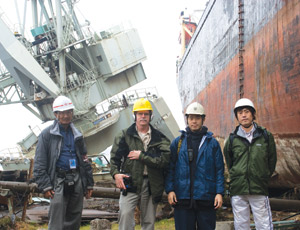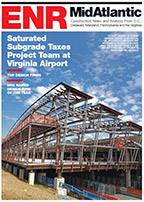Senior Editor Tom Sawyer wrote this week’s cover story after shadowing members of the American Society of Civil Engineers and their Japanese counterparts as they examined debris from the March 11 tsunami in Japan. The team searched for clues for improving design standards for all kinds of buildings and infrastructure that may face a tsunami in the future. It left Sawyer determined to bring home the message that the only possible gain from such tragedies is to learn from them and act on the knowledge.

The idea for the trip came from a conversation between Sawyer and ASCE President Kathy Caldwell at ENR’s Award of Excellence banquet. Both realized the benefit of telling the story of seven technical disaster assessment teams that the association is sending to Japan. Resourceful Sawyer quickly found a flight to Tokyo, a bullet train to Fukushima and a local train to Sendai. He found a room in a private home via the internet and rendezvoused with the team on April 21.
At first look, he says, the appalling destruction along the northeast coast of Honshu Island seems so complete as to defy any measure humans might use to defend against such assaults in the future. But after watching the engineers methodically record data in the field, he realized that such a bleak conclusion was not the only possibility.
Many people and some facilities did survive the worst. People who followed lessons learned as schoolchildren, when tsunami drills sent them climbing on foot to high ground, survived. And some facilities—particularly well-built concrete buildings and vertical rescue hills and structures—also made it through. The torn and battered wreckage left in critical areas, such as commercial ports, has yielded valuable evidence about how relatively small improvements in design might help flood- and tsunami-battered infrastructure survive and resume operations—another message Sawyer wanted to bring back to ENR’s readers.
As he followed the engineers through Japan’s tsunami wasteland, he realized that a menacing geologic feature in the seabed off the Pacific Northwest poses a risk to the U.S. and would be a good place to start writing. The subject of this week’s cover story was born.



Post a comment to this article
Report Abusive Comment